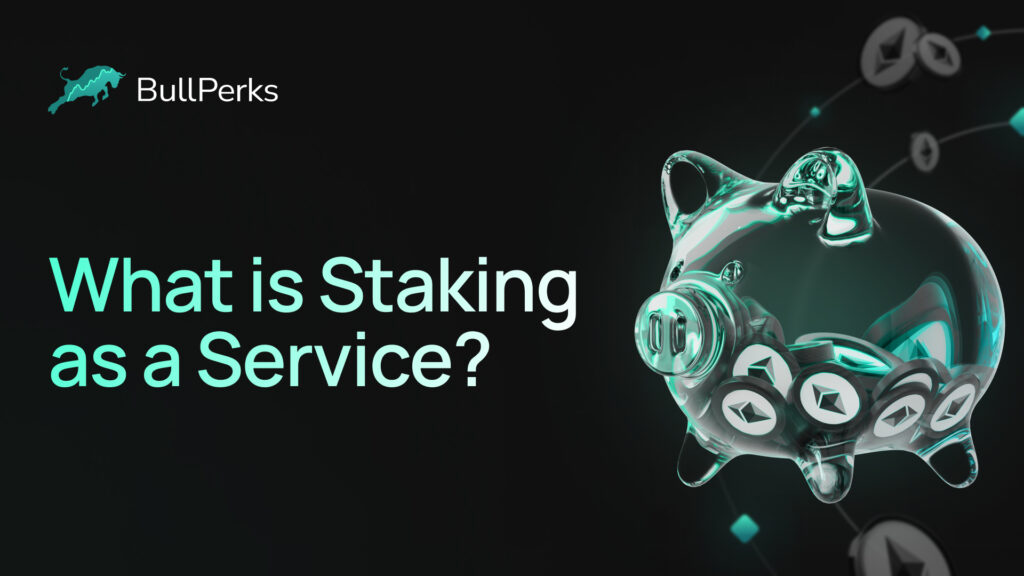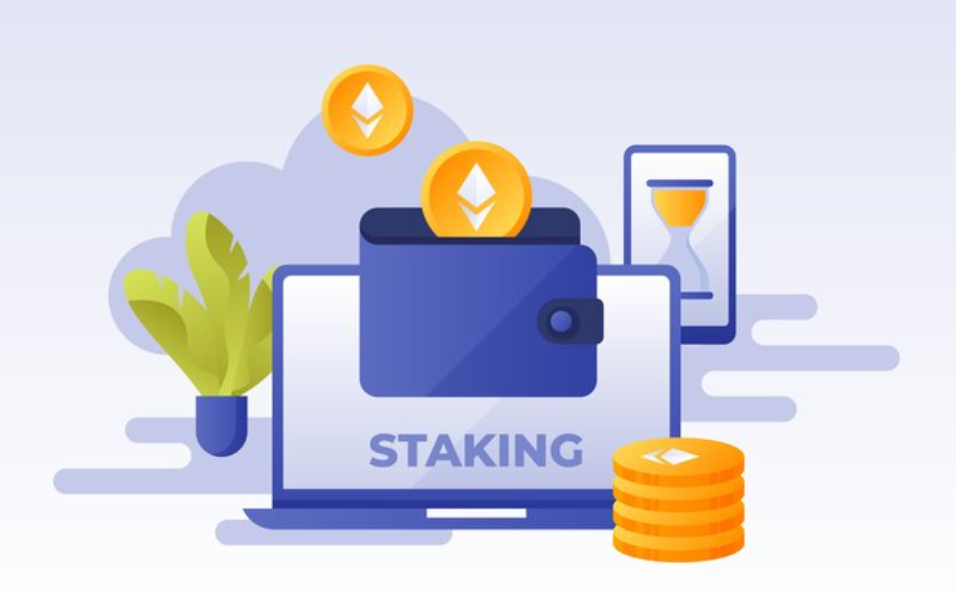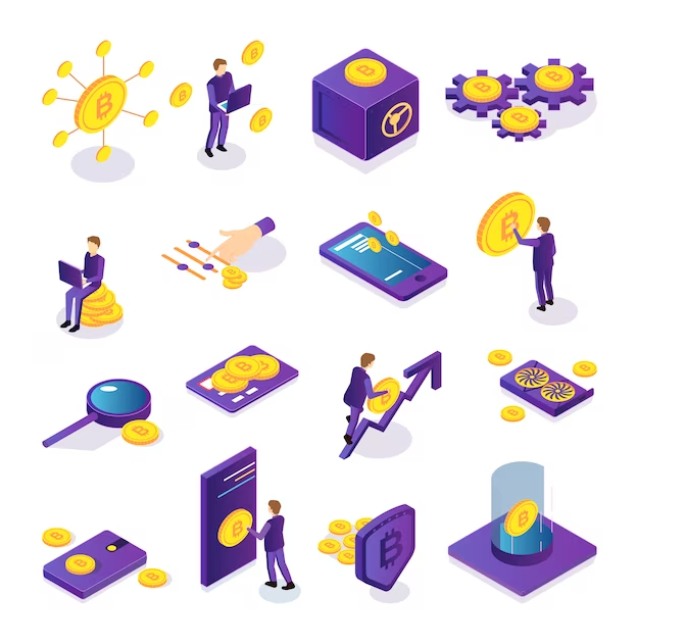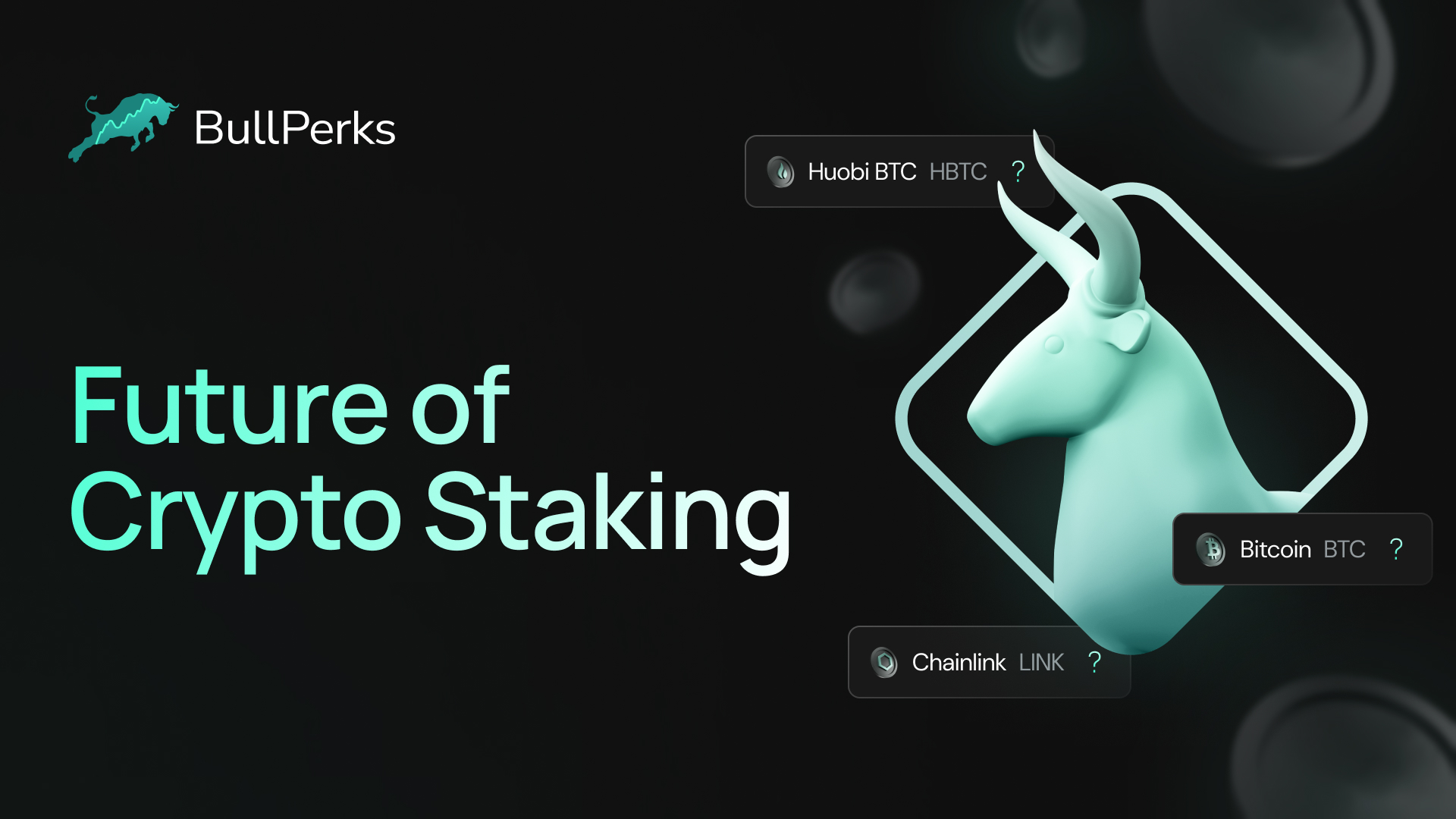
Cryptocurrency and blockchain technologies have revolutionized the financial landscape, introducing novel ways for individuals and institutions to engage with digital assets, earn additional income, and contribute to network decentralization. One such innovative concept is staking, which has evolved into a service-oriented model known as "Staking as a Service" (SaaS).










In this text, we will explain this new concept, and explore its mechanics, historical context, benefits, and considerations. Also, we will have a look at the possible development scenarios of staking services in the future.
Introduction to Staking Services in Cryptocurrency

Source: Freepik
There are two main consensus mechanisms utilized by blockchain technology: proof of work (PoW), and proof of stake (PoS). The PoS consensus mechanism is growing in popularity thanks to its inclusiveness and eco-friendliness. It allows the ecosystem participants to stake their funds and earn rewards for the staked funds. In some networks, stakers not only earn staking rewards but also have governing rights and can actively contribute to the network's operations.
Emergence of Staking as a Service
As the blockchain ecosystem expanded, a gap emerged between the complexity of staking processes and the desire for broader participation. This void led to the development of Staking as a Service, a user-friendly solution that outsources the technical intricacies to specialized staking services providers.
In other words, SaaS caters to both individual and institutional participants who do not have the technical knowledge sufficient to navigate the complexities associated with running individual nodes and validating transactions.
Basics of Staking Service in Cryptocurrency

Source: Freepik
Staking involves users locking up a specified amount of crypto as collateral in a dedicated wallet for a certain period. This collateral serves as a commitment to the network and is utilized to validate transactions and create new blocks. Here's a breakdown of how staking works in cryptocurrency:
PoS: In a PoS-based network, participants, often referred to as validators or stakers, are chosen to create new blocks and validate transactions based on the number of coins they hold and are willing to "stake" as collateral. The more coins a participant stakes, the higher the chances of being selected to confirm transactions and earn rewards.
Locking up cryptocurrency: To stake cryptocurrency, a participant needs to lock up at least a minimum required amount of their tokens in a designated wallet. This locked amount, or stake, serves as collateral and demonstrates the participant's commitment to the ecosystem.
Earning rewards: Participants who successfully validate transactions and create new blocks are rewarded with additional cryptocurrency. The rewards are typically a portion of the transaction fees or newly minted coins. The more tokens a participant has staked, the higher their potential rewards.
Ensuring network security: Staking is designed to incentivize validators to participate honestly and in the best interest of the ecosystem. The collateral serves as a security measure, as cryptocurrency holders have something at stake (punishment, such as losing their staked funds) if they attempt malicious actions.
Consensus protocol: Staking is an integral part of the consensus mechanism in PoS-based ecosystems. Instead of relying on computational power (as in Proof of Work), PoS ecosystems determine the creator of the next block based on factors like the amount of crypto staked, the age of the staked coins, or a combination of these.
Understanding Staking as a Service (SaaS)

Source: Freepik
Staking as a Service is a model where a specialized staking provider handles the technical aspects of staking on behalf of users. This is the main difference between SaaS (custodial staking) and solo staking (non-custodial staking).
SaaS also simplifies the staking process by offering customers the so-called pooled staking service where the crypto tokens of multiple users are pooled together to have more chances to take part in the transaction confirmations and earn rewards. Pooled staking makes it accessible to a broader audience to access the staking service by eliminating the need for users to manage their own nodes or navigate intricate technical requirements.
SaaS providers operate by managing the staking process, including setting up and maintaining nodes, ensuring network connectivity, and handling the distribution of staking rewards. Customers, often referred to as delegators, delegate their tokens to these providers, who then stake on their behalf and distribute rewards based on the share of a user in the staking pool.
Evolution of Staking as a Service

Source: Freepik
Staking as a Service emerged as a response to the increasing complexity of blockchain technology. Historically, engaging in staking required a deep understanding of protocols and technical proficiency because of the ecosystem's technical complexity, thus limiting participation. SaaS providers bridged this gap, democratizing staking.
The adoption of SaaS has surged over time, fueled by a growing demand for accessible and user-friendly staking solutions. The convenience offered by SaaS providers has attracted a diverse user base, ranging from crypto enthusiasts to institutional players, for both non-custodial staking and custodial staking.
Advantages of Staking as a Service

Source: Freepik
SaaS providers offer significant advantages compared to a traditional staking platform. So, they simplify the staking process, offering user-friendly interfaces that enable participants to stake their tokens without technical expertise.
Delegators, instead of relying on solo staking, benefit from the expertise of SaaS providers, eliminating the need to navigate complex technical aspects, such as setting up and maintaining nodes.
Compared to traditional self-staking methods, SaaS offers a more accessible, efficient, and convenient way for participants to engage with decentralized ecosystems.
Risks and Considerations
SaaS is connected not only with pros. It also has significant risks, and locking your money means giving control over it to somebody else. So, one of the primary risks associated with SaaS is the dependency on third-party providers.
Entrusting the control over your assets to a third party raises security concerns. While reputable providers implement robust security measures, users must remain vigilant and stay informed about potential vulnerabilities.
Mitigating these risks involves selecting trustworthy providers, diversifying staking across multiple providers, and staying informed about the security measures implemented by the chosen service.
Choosing a SaaS Provider

Source: Freepik
When selecting a SaaS provider, it is highly recommended to pay attention to the following details:
- Security: Evaluate the provider's safety measures and track record to ensure the safety of your funds.
- Reliability: Assess the provider's reputation and reliability, considering factors like uptime and responsiveness.
- Fees: LEarn about the fee structure, including staking fees and potential additional charges.
- Performance history: Examine the provider's historical performance, including past staking rewards and overall effectiveness.
- Tips for Due Diligence: Conduct thorough research, read user reviews, and engage with the community to gather insights into the provider's reputation and user satisfaction.
When you stake your funds, make sure the selected provider complies with all the requirements because otherwise, you may lose all the coins that you lock.
SaaS for Institutional Investors
SaaS for institutional players involves the outsourcing of the staking process to specialized service providers. This model enables institutions to take part in a network proof-of-stake (PoS) or similar consensus mechanisms without the need for in-depth technical expertise or active management of staking operations. Here's an overview of how staking as a service caters to institutional players.
Access to blockchain networks
Institutions may seek exposure to blockchain networks that utilize PoS or other staking mechanisms. SaaSe allows these institutions to participate in the staking process without directly managing the infrastructure or technical aspects.
Streamlined staking process
SaaS providers handle the complexities of setting up and maintaining nodes, managing staking parameters, and optimizing the staking strategy by reducing all the difficulties to a minimum. This streamlines the staking process for institutional players, eliminating the need for them to navigate the intricacies of running their own nodes and having their own validator.
Delegated staking
Institutional players willing to invest in crypto firms can opt for delegated staking based on an investment contract, where they delegate their cryptocurrency holdings to a SaaS provider. The SaaS provider, as a professional staking service, takes on the responsibility of staking the assets on behalf of the institutional player.
Risk management
SaaS providers often implement risk management strategies to optimize staking returns while minimizing potential risks. Institutional players benefit from the expertise of these providers in managing the staking program efficiently.
Reporting and analytics
SaaS providers typically offer reporting and analytics tools that provide institutional investors with insights into the performance of their staked assets. These tools may include information on staking rewards, performance metrics, and other relevant data.
Customized solutions
Institutional investors often have specific requirements and preferences regarding risk tolerance, return expectations, and compliance. SaaS providers may offer customized staking solutions tailored to meet the unique needs of institutional clients.
Regulatory compliance
Regulatory compliance is one of the biggest considerations when it comes to institutional investment. SaaS providers may address regulatory compliance concerns, ensuring that institutional investors adhere to relevant laws and regulations in their jurisdictions.
Compliance measures may include identity verification, anti-money laundering (AML) checks, and other regulatory requirements such as compliance with the Howey test, and other details that would ensure all procedures are SEC compliant and prevent contradictions with the securities laws.
Scalability
Institutional investors often deal with significant amounts of tokens, and SaaS providers can offer scalable solutions to accommodate large staking portfolios. The scalability of SaaS ensures that institutional investors can efficiently manage staking across diverse ecosystems.
Diversification
Institutional players may diversify their staking portfolios by engaging with multiple SaaS providers or selecting providers supporting various networks. Diversification helps spread risk and capture opportunities across different staking ecosystems.
Strategic partnerships
Institutional players may form strategic partnerships with SaaS providers, establishing long-term relationships to navigate the evolving industry of staking. These partnerships may involve ongoing collaboration on staking strategy, performance optimization, and regulatory compliance of the industry.
In conclusion, SaaS for institutional players presents a convenient and efficient way for large-scale participants to engage with various decentralized ecosystems. It enables these companies to harness the benefits of staking without the operational complexities, empowering them to participate actively in the evolving landscape of decentralized finance.
Future of Staking as a Service
The future of SaaS holds promising trends, including. Continued advancements in technology may further enhance the efficiency and accessibility of SaaS. Anticipated increased adoption as more users recognize the benefits of SaaS and the ease it brings to staking participation.
Conclusion
In conclusion, staking services have emerged as a pivotal force, reshaping how individuals and institutions participate in blockchain networks.
The convenience, accessibility, and potential for higher returns offered by SaaS providers have propelled the adoption of staking to new heights. With the higher adoption of computers, users gained the ability to enjoy simplified processes and optimized returns. However, it is crucial to navigate the associated risks diligently.
As institutional players increasingly engage with Staking as a Service, the landscape of blockchain participation is evolving, promising a future where staking becomes more inclusive and integral to the broader cryptocurrency ecosystem.
Would you like to start investing in the most promising crypto projects? Learn how to invest with BullPerks, the fairest and most community-oriented decentralized VC and multichain launchpad!
Disclaimer. This material should not be construed as a basis for making investment decisions or as a recommendation to participate in investment transactions. Trading digital assets may involve significant risks and can result in the loss of invested capital. Therefore, you must ensure that you fully understand the risk involved, consider your level of experience, investment objectives, and seek independent financial advice if necessary.












